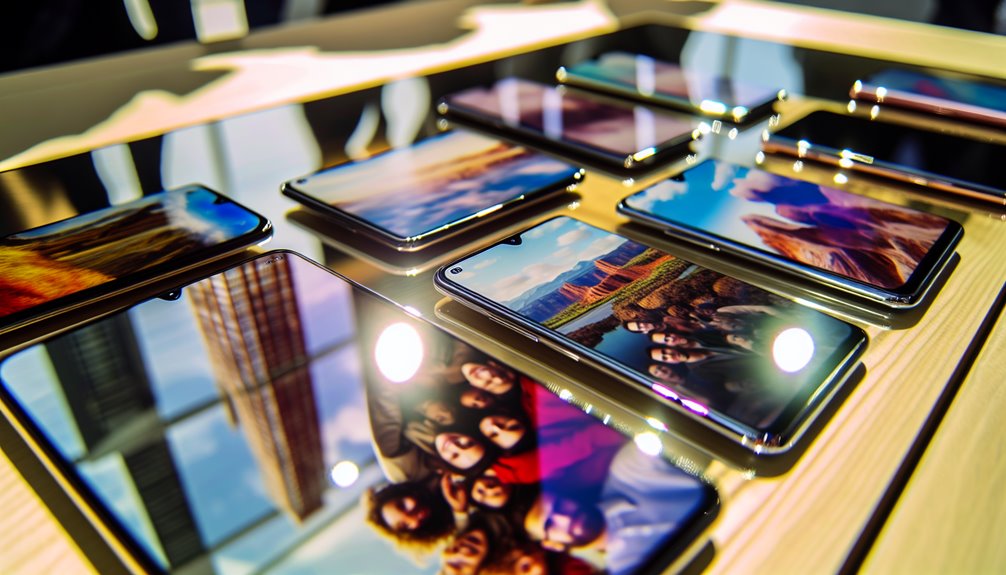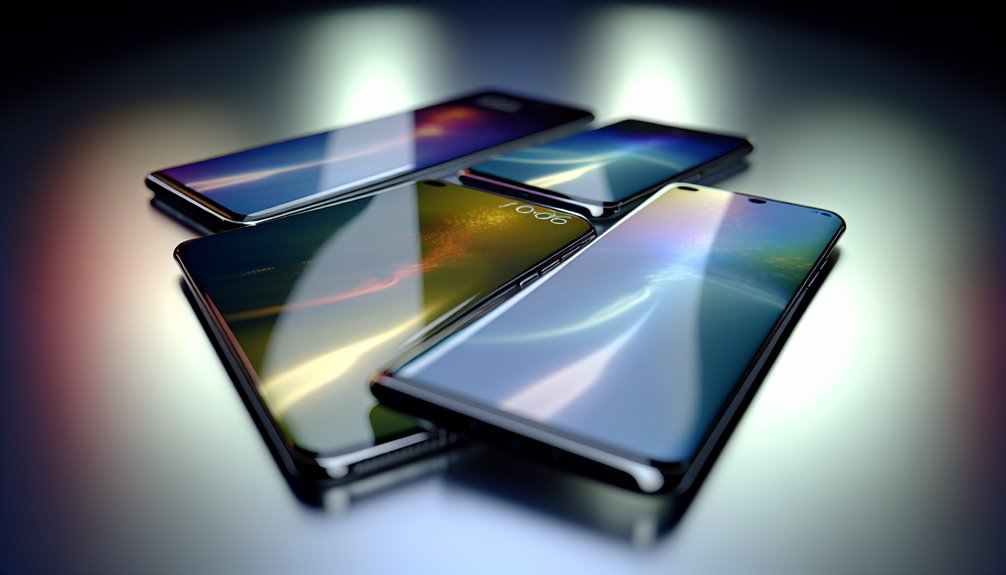Choosing between the Xiaomi Mi Pad and the iPad requires careful consideration of various factors. The iPad stands out with superior performance, exceptional display quality, and a robust app ecosystem, making it ideal for professionals. In contrast, the Xiaomi Mi Pad appeals to budget-conscious users with its modern design and adequate performance for casual tasks. While both devices boast high build quality, the iPad’s longevity through software updates provides significant value. Ultimately, your decision should focus on personal needs and priorities, which may reveal additional insights as you explore further.
Key Takeaways
- Choose the iPad for superior processing power and a wider range of professional applications, ideal for creative and multitasking needs.
- Opt for the Xiaomi Mi Pad if you seek a budget-friendly tablet with solid performance for casual use and gaming.
- The iPad’s display offers better color accuracy and brightness, making it suitable for outdoor use and creative work.
- Consider the iPad for consistent software updates and a more intuitive user interface, enhancing long-term usability.
- Weigh upfront costs against long-term investment; the Mi Pad is cost-effective, while the iPad delivers premium build quality and ecosystem benefits.
Design and Build Quality
When comparing the design and build quality of the Xiaomi Mi Pad and the iPad, it becomes evident that both devices aim to deliver a premium experience, albeit with distinct philosophies.
The iPad excels with its iconic minimalist aesthetic and robust aluminum chassis, which not only enhances durability but also contributes to its ergonomic design. This thoughtful approach guarantees comfort during prolonged use, making it a favorite among professionals and casual users alike.
Conversely, the Xiaomi Mi Pad showcases a modern flair with its sleek lines and vibrant color options. It also employs premium materials, offering a lightweight feel that appeals to those seeking portability.
Ultimately, both tablets present compelling design choices, catering to varied consumer preferences while maintaining a high standard of build quality.
Performance and Specifications
Performance is a crucial factor when evaluating the Xiaomi Mi Pad and the iPad, as it directly influences the user experience across various applications.
In benchmark comparisons, the iPad consistently outperforms the Mi Pad, showcasing superior processing power and graphics capabilities. The iPad is equipped with Apple’s custom A-series chips, designed for high efficiency and robust multitasking, whereas the Mi Pad features Qualcomm’s Snapdragon processors, suitable for everyday tasks but lacking in heavy-duty performance.
Additionally, the iPad supports a wider range of professional applications, thanks to its optimized hardware features. Meanwhile, the Mi Pad offers commendable performance for casual users and gamers, making it a solid choice for budget-conscious consumers.
Ultimately, the decision hinges on the intended use and performance expectations.
Display and Visual Experience
The visual experience offered by both the Xiaomi Mi Pad and the iPad greatly impacts user satisfaction and engagement. Each tablet features distinct specifications that enhance viewing pleasure, particularly regarding color accuracy and screen brightness.
- Color Accuracy: The iPad is renowned for its superior color reproduction, making it ideal for creative professionals.
- Screen Brightness: The iPad often exceeds the Mi Pad in maximum brightness, enhancing outdoor usability.
- Resolution: Both devices provide high-resolution displays, but the iPad generally has a slight edge in pixel density.
- Viewing Angles: The iPad offers better viewing angles, ensuring consistent visuals from various perspectives.
Ultimately, these factors contribute substantially to the overall visual experience, making the choice dependent on user priorities.
Software and User Interface
While user experience often hinges on hardware capabilities, the software and user interface play a pivotal role in determining overall satisfaction with the Xiaomi Mi Pad and the iPad.
The iPad benefits from Apple’s iPadOS, which is known for its intuitive design, seamless multitasking, and regular software updates that enhance performance and security. This creates a robust ecosystem, fostering a sense of continuity and reliability for users.
In contrast, the Xiaomi Mi Pad runs on MIUI for Pad, offering a customizable interface that appeals to users who prefer flexibility. However, its software updates can be less predictable, potentially impacting long-term user experience.
Ultimately, both devices present distinct approaches to software and user interface, catering to different preferences and needs.
Price and Value for Money
When evaluating the Xiaomi Mi Pad and the iPad, price and value for money emerge as significant factors for prospective buyers. The affordability comparison between these two devices reveals distinct advantages for budget-conscious consumers.
- Xiaomi Mi Pad: Typically priced lower, offering excellent features for its cost.
- iPad: Generally more expensive, but renowned for its premium build and ecosystem.
- Budget options: The Mi Pad serves as an attractive alternative for those seeking performance without a hefty price tag.
- Long-term value: The iPad may justify its higher cost through software updates and app support.
Ultimately, the choice depends on individual priorities—whether you value upfront savings or long-term investment in a robust ecosystem.
Frequently Asked Questions
What Accessories Are Available for Xiaomi Mi Pad and Ipad?
Both the Xiaomi Mi Pad and iPad offer a variety of accessories, including stylus options for precise input and versatile keyboard cases that enhance productivity, catering to diverse user needs and preferences in digital environments.
How Do Xiaomi Mi Pad and Ipad Handle Gaming Performance?
In the domain of digital gaming, the performance of devices symbolizes the orchestra of graphics optimization and frame rates. Both Xiaomi Mi Pad and iPad deliver compelling experiences, with each having unique strengths in gaming performance.
What Are the Battery Life Differences Between Xiaomi Mi Pad and Ipad?
Battery life considerably varies between devices, largely influenced by battery technology and specific usage scenarios. Typically, the efficiency of power management and software optimization determines endurance, impacting overall user experience during daily tasks and multimedia consumption.
Which Tablet Has Better Customer Support and Warranty Options?
When evaluating customer service and warranty coverage, it is essential to compare the responsiveness and accessibility of support channels. Generally, established brands offer superior warranty options and customer service, enhancing overall consumer satisfaction and confidence in their products.
How Do Software Updates Compare Between Xiaomi Mi Pad and Ipad?
When evaluating software updates, the difference in update frequency and software stability is essential. Apple provides consistent updates, enhancing security and performance, while Xiaomi’s updates may vary, potentially impacting user experience and device longevity.






